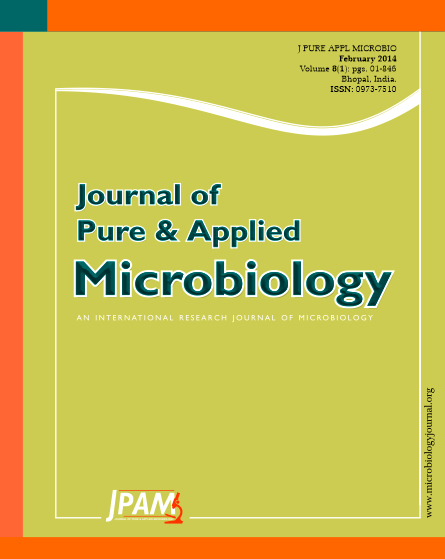In this study conducted a survey of nuts crops (peanuts, almond and hazelnuts) available in different market of Riyadh, Saudi Arabia for the presence of Aspergillus flavus and used RAPD and ISSR markers to investigate the genetic variability of A. flavus isolates. From a total of 72 samples comprising (24 each crop), 20 isolates were isolated. Identification of strains by colony morphology. Potential ability to produce aflatoxins (AFs) B1, B2, G1 and G2 was studied by HPLC analysis of these AFs in the culture extracts. Eleven (55%) A. flavus isolates produced detectable levels of AFs at concentrations ranging from 0.2 to 1.2 µg/kg. Fifty-five percent of the isolates produced AFs. The isolates were classified into five chemotypes based on the ability to produce AFs and sclerotia. RAPD and ISSR analysis revealed a high level of genetic variability in the A. flavus population. Clustering, based on RAPD and ISSR genotype, were unrelated to aflatoxin production or substrate origin.
Aspergillus flavus, Nuts, HPLC, RAPD, ISSR
© The Author(s) 2014. Open Access. This article is distributed under the terms of the Creative Commons Attribution 4.0 International License which permits unrestricted use, sharing, distribution, and reproduction in any medium, provided you give appropriate credit to the original author(s) and the source, provide a link to the Creative Commons license, and indicate if changes were made.


